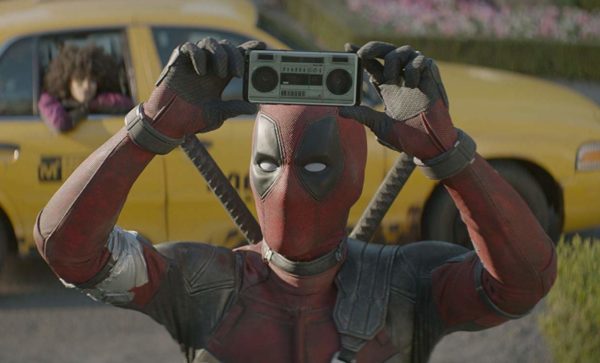by Alex Edghill
Marketing budgets for summer blockbusters can exceed $100 million. On average, the figure tops $40 million. And the largest single line item for marketing on any balance sheet is almost always TV advertising. Social media budgets have crept up recently in recognition of social media’s usefulness for targeted pitches, but TV is still king when it comes to reaching the most people, and quickly.
The goal of most releases, especially bigger blockbusters, is to secure as much money as possible on opening weekend. TV has traditionally been the single most important tool in making this a reality and building awareness for films, which in turn drives opening-weekend ticket sales.
DVR recording, cord cutting, and the splintering of audiences in recent years have all diluted the effectiveness of TV ad time, while the price per 30 seconds has risen by 30+ percent over the last 15 years. Marketing spending has been spiraling out of control for many years, so much so that studios have been forced to focus more on international revenue to turn a profit and alternative forms of marketing to reach audiences for less cash. Social media has long been hailed as something that could revolutionize the industry’s marketing efforts, but it still falls way behind TV and other traditional forms of advertising spending. So the question remains, how can social media be used more effectively? The social media landscape is ever evolving, and while many platforms have struggled with offering more than simple banner ads, others have been honing their offerings to be more attractive to larger advertisers, Hollywood included.
Paying influencers and micro-influencers
Other industries such as gaming employ a vast number of influencers, both large and small, who advertise, review, or use their products. Studios could follow their lead and make an effort to hire key influencers to create content about releases and drum up interest among their followers. These don’t have to be significant social media mavens—a few dozen content creators across different social media platforms could provide a huge boost and differentiation from other titles for a fraction of the cost. Many content creators, especially in the superhero or sci-fi genres, churn out fan theories, point out Easter eggs in trailers, and offer wild off-the-wall explanations simply to create new, different content for their fans. Multiply that by enough content creators, and you can quickly reach tens of millions of relevant people. I’m not talking about paid sponsorships, but studios could pitch ideas for episodes or podcasts, provide access to actors or members of the creative team, offer behind-the-scenes looks at props or costumes, and in general be more involved with smaller niche media channels.
Fan-driven content
As sequels continue to drive box office revenue, most franchises have devout fans who live and breathe their films. We’re not necessarily talking about crowdsourcing scripts or plot points, but listening to fans’ theories and wishes and giving them a nod in the film—with a line of dialogue, for example—would result in much appreciation from audiences. A film that is aware of its community and acknowledges it, even in passing, helps galvanize its fan base even further and ensures long-term success.
Personalization
A typical film will have two to three trailers released sometime within the four to six months before release. Some will have international trailers with a slightly different cut for overseas audiences, and for R-rated films there are often red-band trailers to help showcase the edgier content. This formula has existed forever, it seems, but it doesn’t harness the inherent power of social media—personalizing the preview for the viewer. Algorithms that choose which banner ads to display can tap into the browsing habits of users and present more relevant ads. What if similar algorithms were used to customize trailers to the viewing habits of moviegoers? Reaching out to a devoted fan of a particular star? Then serve up a cut of the trailer that features the star more prominently. Or perhaps the music for the trailer can be customized among a few predetermined options to appeal to a viewer’s tastes or who they follow. This type of dynamic and innovative presentation is what has typically set the great marketing campaigns apart.
Breaking the norm for interaction
Lastly, looking at some of the most innovative and successful social media campaigns in recent years such as Deadpool, the Avengers sub-franchise of the Marvel Cinematic Universe, and the Star Wars franchise—they not only employ innovative, targeted methods in social media channels but to varying degrees leverage the stars of their films to generate organic buzz for the films. Most movies create social media pages around six months from release and post trailers, set pictures, and other information that fans would enjoy and try to drum up interest on the various social media platforms. Franchises have a leg up in this regard, since they can build steam over many years of generating followers.
Few releases properly leverage their stars, many of whom have their own fan bases, but this is a huge opportunity to drive awareness as well. Ryan Reynolds’s Deadpool tweets grabbed headlines and interest from his huge social media following, which clearly benefited the film. A star’s social media acumen and following can be leveraged in coordination with the studio’s marketing efforts to promote the property and increase their attractiveness and bankability as stars. Hiring a star with 20 million followers versus two million would have an effect on box office potential.
Social media is evolving in terms of its platforms and offerings, and with that comes a wealth of opportunities for forward-thinking studios to change how they leverage and interact with their prospective audiences. TV advertisements are becoming less and less effective as time goes by, while their costs keep skyrocketing. Those who embrace change and employ similarly innovative strategies for awareness building will have a leg up on their competitors and be well on the way to a successful and profitable release.



Share this post